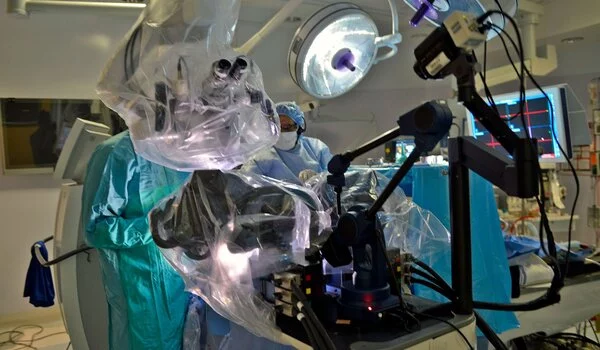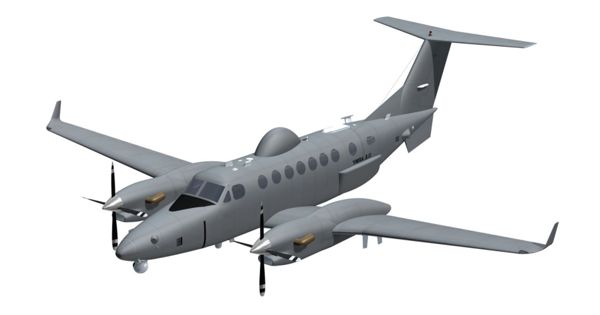For many years, medical robots have been the focus of continuing study and development. These robots are intended to help surgeons execute minimally invasive treatments such as laparoscopic surgery and robotic-assisted surgery, which need precision and agility. These robots are frequently employed in treatments involving various regions of the body, including the abdomen, chest, and other organs.
Scientists demonstrated that their steerable lung robot can autonomously navigate the complexities of the lung while avoiding critical lung structures.
In the United States, lung cancer is the biggest cause of cancer-related deaths. Some cancers are exceedingly tiny and concealed deep within lung tissue, making surgery challenging. To solve this issue, researchers at UNC-Chapel Hill and Vanderbilt University have been developing a very bendy but strong robot capable of traversing lung tissue.
Their investigation has reached a new milestone. In a new paper published in Science Robotics, Ron Alterovitz, Ph.D., of the UNC Department of Computer Science, and Jason Akulian, MD MPH, of the UNC Department of Medicine demonstrated that their robot can autonomously move from “Point A” to “Point B” in a living laboratory model while avoiding important structures such as tiny airways and blood vessels.
This technology allows us to reach targets we can’t otherwise reach with a standard or even robotic bronchoscope. It gives you that extra few centimeters or a few millimeters even, which would help immensely with pursuing small targets in the lungs.
Dr. Akulian
“This technology allows us to reach targets we can’t otherwise reach with a standard or even robotic bronchoscope,” said Dr. Akulian, co-author of the paper and Section Chief of Interventional Pulmonology and Pulmonary Oncology in the UNC Division of Pulmonary Disease and Critical Care Medicine. “It gives you that extra few centimeters or few millimeters even, which would help immensely with pursuing small targets in the lungs.”
The development of the autonomous steerable needle robot leveraged UNC’s highly collaborative culture by blending medicine, computer science, and engineering expertise. In addition to Alterovitz and Akulian, the development effort included Yueh Z. Lee, MD, PhD, at the UNC Department of Radiology, as well as Robert J. Webster III at Vanderbilt University and Alan Kuntz at the University of Utah.
The robot is made of several separate components. A mechanical control provides controlled thrust of the needle to go forward and backward and the needle design allows for steering along curved paths. The needle is made from a nickel-titanium alloy and has been laser etched to increase its flexibility, allowing it to move effortlessly through tissue.

The engraving on the needle allows it to easily navigate around obstructions as it advances forward. Other attachments, like as catheters, might be used in conjunction with the needle to do procedures like lung biopsies.
The needle must know where it is going in order to drive into tissue. The researchers created three-dimensional models of the lung, including the airways, blood arteries, and the chosen target, using CT scans of the subject’s thoracic cavity and artificial intelligence. Once the needle has been positioned for launch using this 3-D model, their AI-driven program orders it to automatically navigate from “Point A” to “Point B” while avoiding key structures.
“The autonomous steerable needle we’ve developed is highly compact, but the system is packed with a suite of technologies that allow the needle to navigate autonomously in real-time,” Alterovitz, the project’s chief investigator and senior author, stated. “It’s akin to a self-driving car, but it navigates through lung tissue, avoiding obstacles like significant blood vessels as it travels to its destination.”
Respiratory motion can also be accounted for by the needle. The lungs, unlike other organs, are constantly expanding and contracting in the chest cavity. This can make targeting a living, breathing subject more challenging. Akulian compares it to firing at a moving target.
The researchers tested their robot while the laboratory model performed intermittent breath-holding. Every time the subject’s breath is held, the robot is programmed to move forward.
“There are still some nuances in terms of the robot’s ability to acquire targets and then effectively get to them,” said Akulian, a member of the UNC Lineberger Comprehensive Cancer Center, “and while there is still a lot of work to be done, I’m very excited about continuing to push the boundaries of what we can do for patients with the world-class experts that are here.”
“We plan to continue creating new autonomous medical robots that combine the strengths of robotics and AI to improve medical outcomes for patients facing a variety of health challenges while providing guarantees on patient safety,” said Alterovitz.
















